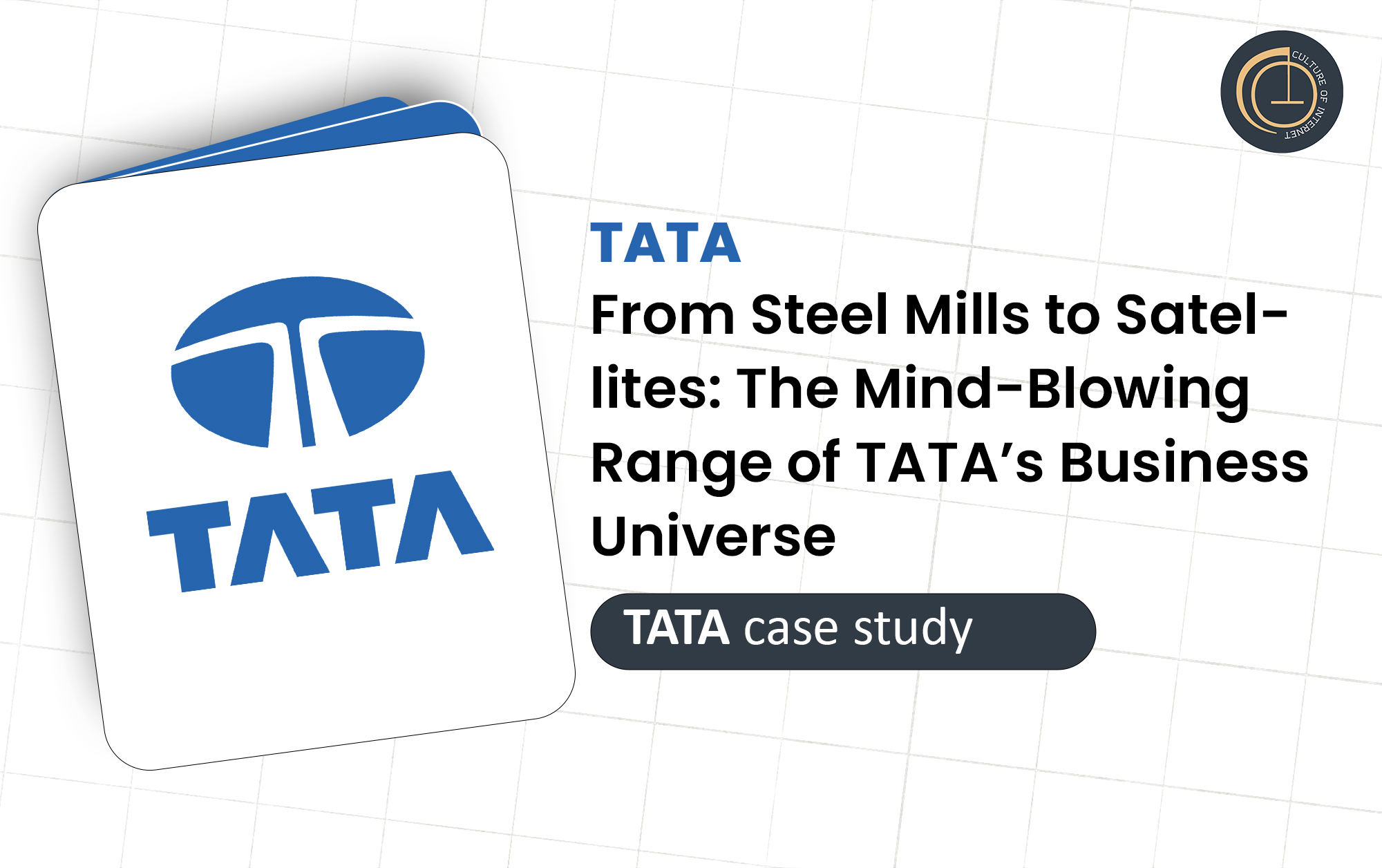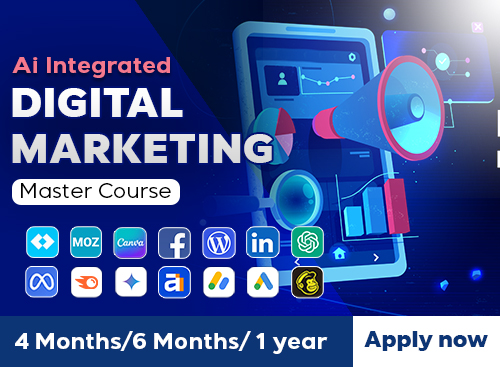Tata: Company Overview
The Mind-Blowing Range of TATA’s Business Universe
Jamsetji Tata: The Quiet Rebel
The year was 1868. The British Raj was in full swing, Indian industries were practically non-existent, and anyone with real ambition was either working for the empire or shipping off to England. But Jamsetji Nusserwanji Tata, a sharp, clear-eyed man from a modest Parsi family, thought differently.
He started a modest trading firm dealing in cotton, but his ambitions went far beyond spices and textiles. Jamsetji was dreaming about steel mills, hydroelectric plants, universities, and luxury hotels at a time when even the thought of an Indian competing on the global stage was met with polite British chuckles.
And here’s the thing about Jamsetji — he wasn’t chasing money for money’s sake. He genuinely believed that a modern, industrial India was key to breaking free from colonial dependence. Economic independence before political independence. A visionary before his time.
The Taj Mahal Palace Hotel: A Bold Middle Finger to British Snobbery
Legend has it, Jamsetji was once denied entry to a fancy British-only hotel in Bombay. He didn’t protest or argue. Instead, he quietly decided he’d build a better hotel. Not just for the British elite, but for everyone.
So in 1903, the Taj Mahal Palace Hotel opened its doors. With electric lighting, elevators, and rooms with attached bathrooms — features Bombay had never seen — the hotel became a symbol of Indian excellence.
The British gentry who once sneered ended up sipping gin at the Taj’s bar, and it still stands as Mumbai’s crown jewel. A gentle, enduring reminder that the best response to arrogance is excellence.
Jamshedpur: A Town Born Out of a Dream
Jamsetji had bigger dreams than hotels though. His obsession was steel. In a country that imported everything, building a steel plant wasn’t just about business — it was about national pride
After scouring the forests of central India, Jamsetji’s team found a spot in a place called Sakchi. The locals had never even heard of steel, let alone imagined a factory. But by 1907, with Jamsetji’s son Dorabji Tata taking the lead (since Jamsetji had passed away in 1904), Tata Steel was born
It wasn’t just a factory. It was a township. Jamshedpur came up with roads, schools, hospitals, and public parks for its workers — decades before ‘employee welfare’ was even a term.
By the time India gained independence in 1947, Tata Steel had become a national asset. Even Mahatma Gandhi praised it as proof that Indians could match British industry if given the chance
From Steel to Salt, Trucks to Tea
After steel came power. In 1910, Tata set up India’s first hydroelectric project in Khopoli, lighting up Mumbai before most Indian cities had even heard of electricity.
By the time J.R.D. Tata took over in the 1930s — a suave, well-spoken, aviation-obsessed gentleman — the Tata Group was already India’s most respected industrial house. J.R.D. was a fascinating character. He became India’s first licensed pilot in 1929 and later launched Tata Airlines, which would become Air India.
But J.R.D. wasn’t just about planes. Under his leadership, the group expanded into chemicals, consumer products, hospitality, IT services (through TCS), and wristwatches (via Titan). From salt to software, as the saying goes.
The secret? They picked industries that mattered to India. Industries that would give jobs, empower local supply chains, and help build a self-reliant economy.
The Tetley, Corus, and Jaguar Land Rover Chapter
Fast-forward to the 2000s, and along came Ratan Tata — a reserved, deeply thoughtful man who believed India should stop playing small.
People underestimated him at first. Quiet men often are. But he had big, global plans.
In 2000, Tata Tea bought Tetley — one of Britain’s oldest tea brands. It was poetic revenge. A former British colony now owned the British cuppa.
Then came Corus Steel in 2007 — a $12 billion takeover. Critics called it reckless. Turns out, they were wrong.
The real mic-drop moment came in 2008 when Tata Motors bought Jaguar Land Rover from Ford. Everyone thought it was a suicidal move. How could an Indian company manage two luxury car brands when even Ford had failed?
But Ratan Tata knew better. He nurtured JLR, let them lead their own engineering, pumped investments into new models, and today, the brands are global darlings. If you spot a shiny Range Rover on Mumbai’s Marine Drive or London’s Kensington, remember, it’s proudly desi-owned.
The Nano: A Heartfelt Dream That Didn’t Quite Work
While global takeovers made headlines, Ratan Tata’s favorite project was something far more humble — the Tata Nano.
Inspired after seeing a family of four squeezed onto a scooter, he decided India needed a safe, affordable car. Launched at just ₹1 lakh (around $2,000), the Nano was meant to be the people’s car.
Unfortunately, it struggled with brand perception. Indians didn’t want to own the ‘cheapest car.’ Aspirations matter, and the Nano’s positioning hurt it.
But even in failure, it was a gutsy, well-intentioned attempt to change lives. And in hindsight, it paved the way for India’s current affordable car boom.
Boardroom Battles and the Cyrus Mistry Fallout
Not all of Tata’s history is rosy. In 2012, Cyrus Mistry was appointed chairman, marking the first time a non-Tata family member took the reins.
By 2016, things got messy. Mistry was abruptly removed, leading to public mud-slinging and lawsuits. It was the kind of corporate drama tabloids live for.
But to their credit, Tata handled it gracefully. They brought in N. Chandrasekaran, a steady hand from TCS, who quietly steered the ship back to calmer waters.
The Future: Electric Dreams, Digital Frontiers, and Neu
Under Chandra’s leadership, Tata is aggressively pushing into electric vehicles, with Tata Nexon EV leading the charge in India. Tata Power is ramping up renewable energy projects, from solar to wind.
The group also launched Tata Neu, a super app meant to be India’s one-stop digital shop for groceries, travel, healthcare, and everything in between. Early reviews were mixed, but it’s evolving fast.
TCS continues to be a global IT services powerhouse, and quietly, Tata is building an empire in cloud services, AI, and cybersecurity.
Why Tata Still Feels Personal
In a country where most billionaires have a love-hate relationship with the public, Tata is different.
It’s because nearly 66% of Tata Sons’ profits go to charitable trusts. These trusts fund cancer hospitals, rural schools, water projects, scholarships, disaster relief, and more.
They don’t do it for tax breaks. They do it because it’s how they’ve always done business.
When you buy Tata Salt, sip Tata Tea, drive a Tata car, or use a TCS-powered app, you’re indirectly contributing to those causes.
And in a world obsessed with IPOs and valuations, that’s rare. And precious.
Digital Marketing at Tata: Where Tradition Meets Tech
Tata isn’t just building hotels and cars anymore — they’re building digital ecosystems. Over the past few years, the Group has poured serious resources (over $2 billion into Tata Neu alone sanity.io+1the-ken.com+1vue.ai+4in.fashionnetwork.com+4en.wikipedia.org+4) into smart, data-driven campaigns spanning super apps, omnichannel experiences, and high-engagement content.
The Super‑App Push: Tata Neu
-
Launch & Promotion
Tata Neu launched in April 2022 just as IPL season kicked off — the buzz was real. The synergy between Tata sponsoring IPL and promoting Neu meant 6.6 million installs in the first month, growing to 11 million by mid‑June 2022 -
Engagement Challenge
Despite downloads, only ~14% of users were retained—86% rarely used the app . Monthly installs dropped ~80% YoY by Q4 2024, and monthly active users (MAUs) fell 20% in early 2025 -
Evolution & Scale
Tata Neu combined 20+ Tata brands — from 1mg, Croma, BigBasket to Air India — aiming for seamless user experience linkedin.com+10linkedin.com+10sanity.io+10. In FY24, Tata Digital hit ₹420.5 crore turnover (vs ₹204.3 cr FY23), 20.8 million transacting customers, and 116 million NeuPass reward members
What it shows: Tata had massive user interest, but the challenge is turning buzz into consistent usage — typical of emerging super‑app journeys worldwide.
Benchmarking Digital Maturity: Tata’s Corporate Edge
In April 2025, the Tata Business Excellence Group (TBExG) benchmarked 21 Tata companies on their digital marketing maturity tatabex.com+1scribd.com+1. They were tested on:
-
Organic search and SEO
-
Paid media campaigns
-
UX & conversion optimization
-
Email marketing
-
Social media and influencer engagement
Key insights from Tata:
-
Growing focus on cross-platform customer-data integration to enable behavior-triggered campaigns.
-
Sophisticated approaches to funnel-based paid advertising and conversion optimization.
-
Strong traction in B2B digital engagements and account-based marketing.
Social Media & Content Strategy
Tata’s social media footprint is vast:
-
LinkedIn: Over 2.1 million followers, used to highlight thought-leadership and corporate initiatives.
-
Facebook: Around 264,000 fans, sharing a mix of brand storytelling and humanitarian campaigns.
Their campaigns are strategic — blending legacy (#WeAlsoMakeTomorrow), corporate credibility, and soft-sell product messages.
Looking at industry-wide engagement data (graph above), construction, manufacturing, and utilities sectors (which include Tata’s steel, power, and manufacturing businesses) see average engagement rates around 3–4% on platforms like LinkedIn and Instagram iide.coblog.hootsuite.com — showing Tata’s performance is in line with, or even above, benchmarks for traditional industries.
SEO, Email & Paid Media
Across its many subsidiaries:
-
TCS leads on SEO, influencer marketing, and webinars
-
Consumer brands like Tata Motors and Tata Consumer Products deploy content marketing (blogs, social videos, email campaigns) and PPC to capture demand-driven and seasonal searches .
-
Analytics from Tata show robust ROI tracking — each campaign tied to performance metrics like click‑throughs, conversions, and lead scores .
Event Marketing & IPL Synergy
IPL exposure isn’t just Tata Neu’s prerogative. With 550–600 million viewers on JioHotstar for IPL 2024 tata.com+7exchange4media.com+7sanity.io+7, Tata integrates brand messaging during matches, unlocking massive digital reach and on-ground visibility — a winning one-two punch during busy IPL seasons.
What the Stats Say
Metrics
| Metrics | Numbers & Observations |
|---|---|
| Neu Installs post-launch | 11 million by mid-2022 m.economictimes.com sanity.io linkedin.com +1 en.wikipedia.org +1 |
| Neu Monthly Active Users (MAU) | Down 20% YoY in early 2025 |
| NeuPass Rewards Members | 116 million by FY24 |
| FY24 Digital Turnover (Tata Dig) | ₹420.5 cr vs ₹204.3 cr YoY |
| Tata Digital Losses FY24 | ₹1,201 cr pared from ₹1,370 cr |
| Social Engagement Benchmarks | 3–4% avg in comparable sectors |
Not just numbers — but signals of intent, correction, and digital firepower.
What’s Next on Tata’s Digital Horizon?
-
User journey optimization & retention focus on Neu — improving onboarding, UI, and personalization.
-
Stronger cross-touchpoint campaigns — linking CRM, email, app pushes for lifecycle marketing.
-
Deepened analytics & AI to predict user behavior, fine-tune paid budgets, and model funnels across brands.
-
Expanded event marketing beyond IPL to include ecommerce festivals, sustainability campaigns, and sector-focused online forums.
Final Takeaway — A Digital Story with Heart
Tata’s digital journey feels true to its DNA — strong on purpose, bold on innovation, and willing to recalibrate when needed. They’re fusing century-old trust with 21st-century marketing playbooks — and that, to me, is a story worth sipping chai over.
Want me to weave this into a visual infographic layout? Or maybe deep-dive harder into one Tata brand’s digital playbook? Just say the word!
Explore Our Comprehensive Marketing Strategy Course
Join our in-depth course to master Tata India's marketing strategies, learn from expert case studies, and gain actionable insights to apply in your own business or career.









